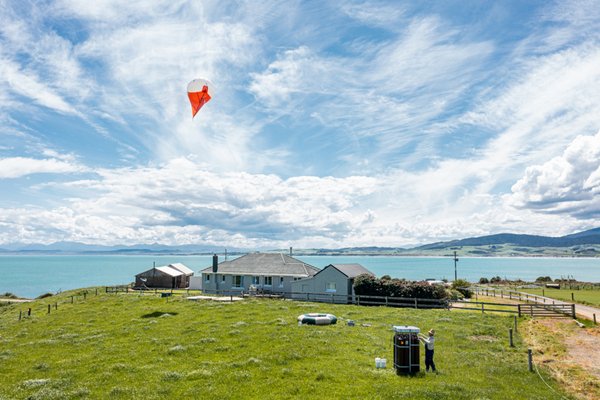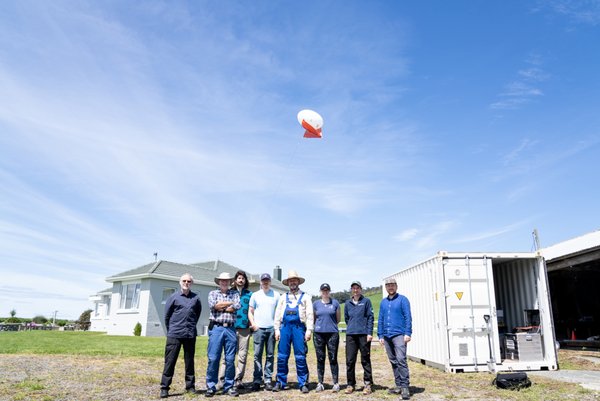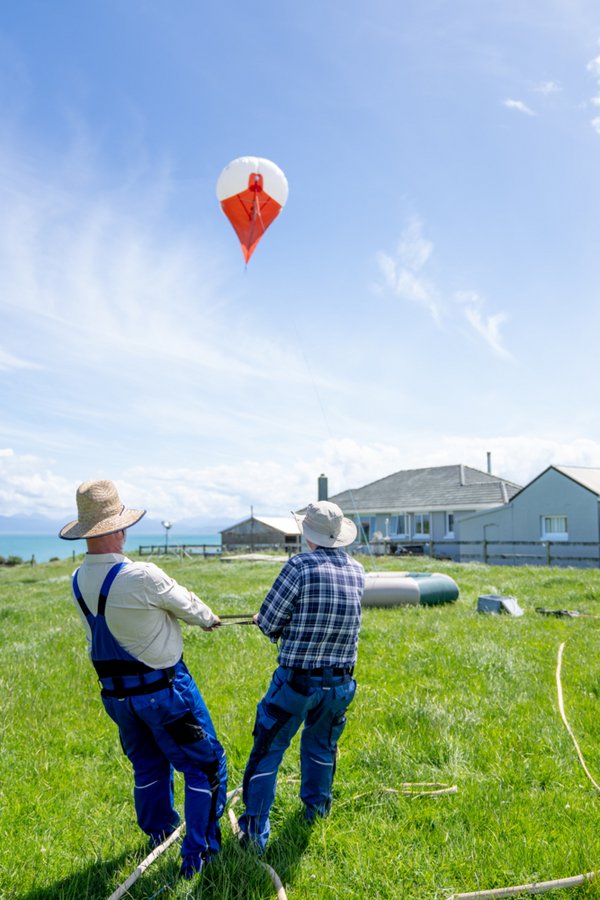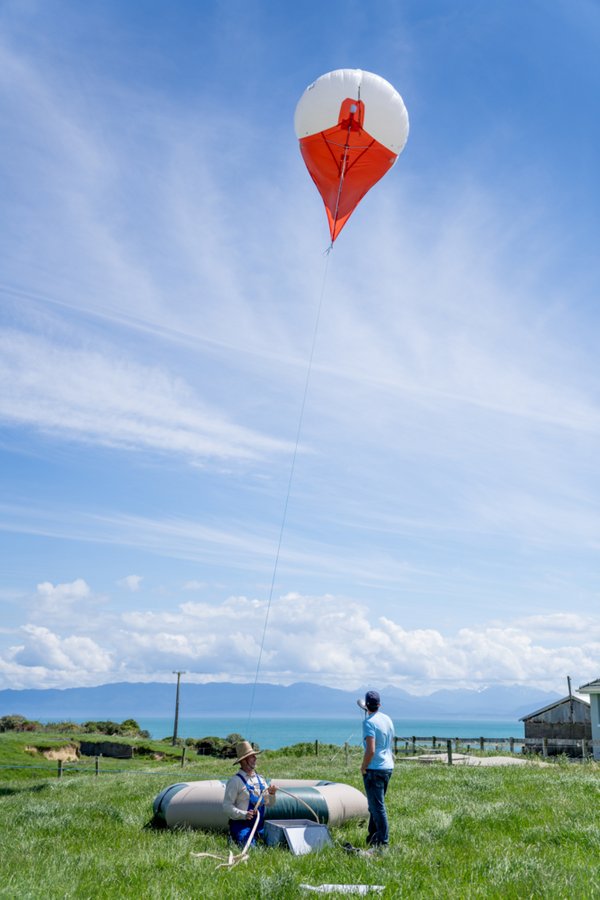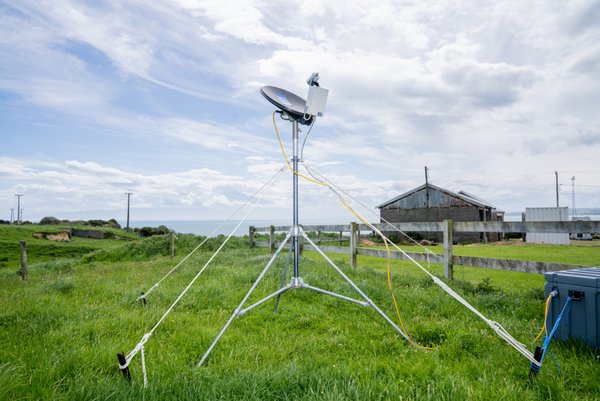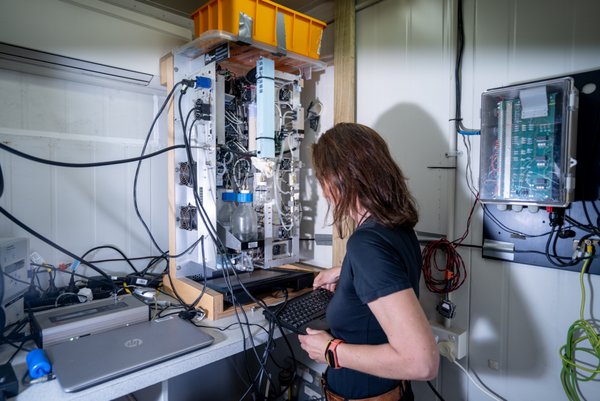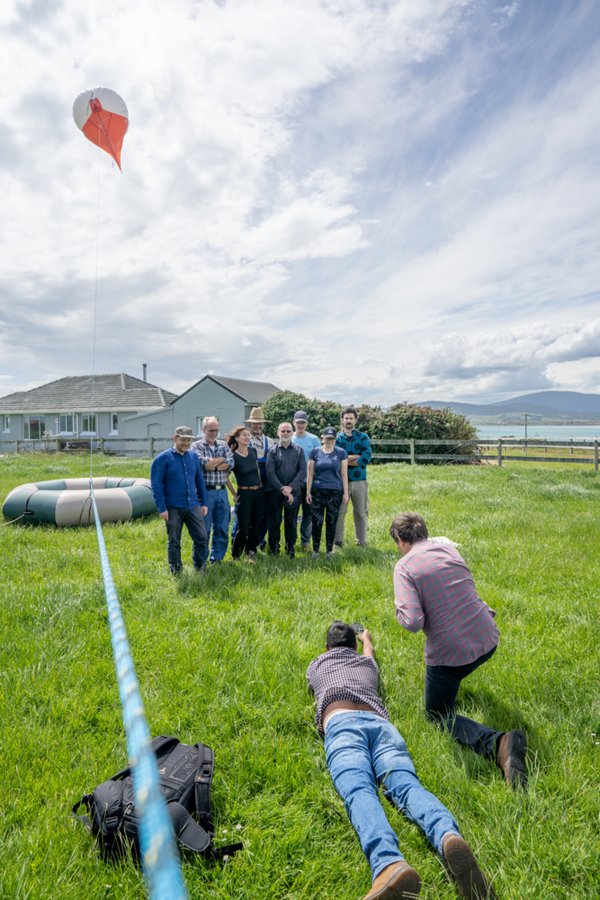German researchers in New Zealand on the traces of climate change
Leipzig/Waihōpai,
18.11.2022
German and New Zealand researchers measure together in the South Pacific
Leipzig/Waihōpai. At Te Waewae Bay near Waihōpai (Invercargill), unusual activities are taking place in November. Extensive measurements are being carried out in the far south of New Zealand to study the atmosphere. The location was chosen to minimise human environmental influences and to be able to observe air masses originating from the Southern Ocean region. The research is jointly led by the National Institute of Water and Atmospheric Research (NIWA) in New Zealand and the Leibniz Institute for Tropospheric Research (TROPOS) in Germany. The research is funded for two years by the Federal Ministry of Education and Research (BMBF).
Scientists from the Institute of Meteorology and Climatology at Leibniz Universität Hannover (funded by the BMBF), the University of Canterbury and the University of Auckland, funded by the Deep South National Science Challenge and Auckland University, are also involved in the activities. The measurement campaign had been delayed by the COVID-19 pandemic, as New Zealand had imposed a strict entry ban in early 2020 and the last restrictions were not lifted until autumn 2022.
The German team has sent a container of equipment to the site, and local team members have brought instruments from other parts of New Zealand (Aotearoa). The researchers are performing a variety of measurements from the ground and from a tethered balloon that ascends to an altitude of about 1.5 kilometres.
Those involved are looking forward to valuable data on particles in the air, turbulence and meteorological conditions in the marine boundary layer - the layer of the atmosphere that is in direct contact with the ocean. These factors all influence the formation of clouds. The results will help to improve climate model predictions for the Southern Hemisphere.
Dr Guy Coulson from NIWA explains: "Southern Ocean clouds are regularly misrepresented in climate models. Comparisons with satellite data show that the clouds in the models over the Southern Ocean allow too much sunlight to reach the sea surface. This leads to sea surface temperature being overestimated, sea ice extent being underestimated, ocean currents being misrepresented, and low pressure areas being shifted southwards in the models."
Dr. Frank Stratmann from TROPOS adds: "We suspect that the interactions between clouds and aerosol particles of biological origin play a greater role here than in the northern hemisphere. Our institute has already carried out similar investigations at the southern tip of South America, in the Southern Ocean and on Antarctica. The measurements in New Zealand are another important piece of the puzzle."
Prof. Dr. Seckmeyer from Leibniz Universität Hannover adds: "For more than 20 years we have already seen that the cloud cover in New Zealand is very different from that in Europe, which leads to much higher irradiation, especially in the UV range. We hope the measurement campaigns will provide further insight into the causes of the unusually large differences."
The researchers will already present their first results in December at the conference of the NZ Hydrological Society and the Meteorological Society NZ in Dunedin (Ōtepoti) and at a press conference in Leipzig.
The work this November will also serve as a prelude to a larger measurement campaign in 2025, in which the research aircraft HALO (HALO-South campaign) and probably the research vessel Sonne (Sonne-South campaign) will also participate from the German side.
Contacts for media:
Dr. Frank Stratmann
Group Leader Experimental Cloud Physics, Experimental Aerosol and Cloud Microphysics Department, Leibniz Institute for Tropospheric Research (TROPOS)
Email: frank.stratmann[at]tropos.de
Tel. +64-20-4129-8113 (NZST = MEZ +12h!)
https://www.tropos.de/en/institute/about-us/employees/frank-stratmann
Dr. Guy Coulson
Science Centre Atmosphere, National Institute of Water and Atmospheric Research (NIWA), Nelson, New Zealand
Tel. +64-3-545-7731 (NZST = MEZ +12h!)
https://niwa.co.nz/people/guy-coulson
as well as
Prof. Dr. Gunther Seckmeyer
Institute of Meteorology and Climatology, Gottfried Wilhelm Leibniz Universität Hannover
Tel. +49 511 762 4022
https://www.meteo.uni-hannover.de/de/institut/personen/personen-detailansicht/institut-fur-meteorologie-und-klimatologie-3kf4s/professorinnen-und-professoren/prof-dr-gunther-seckmeyer?tx_t3luhepv_t3luhepvoe%5BdisablePersHomepages%5D=0&cHash=a1be41bf0975663ab8f3c4e24d0ea38d
or
Tilo Arnhold
Public Relations, Leibniz Institute for Tropospheric Research (TROPOS)
Phone: +49-341-2717-7189
https://www.tropos.de/en/current-issues/press-releases
as well as
Stacy Mohan
Communications Lead - Climate Science, National Institute of Water and Atmospheric Research (NIWA), Nelson, New Zealand
Tel. +64-4-386-0491 & +64-21-029-83452 (NZST = MEZ +12h!)
https://niwa.co.nz/people/stacy-mohan
Further information and links:
HALO-South:
https://halo-research.de/sience/future-missions/halo-south/
Hydrometsoc22 - NZHS MSNZ CONFERENCE 2022 in DUNEDIN:
https://www.hydrometsoc22.co.nz/_files/ugd/623971_6f3f59eb3a6f40ee8989284475ff9ed1.pdf
Updrafts crucial - clouds in the southern hemisphere more precisely understood (Press release, 26.01.2022)
https://www.tropos.de/en/current-issues/press-releases/details/aufwinde-entscheidend-wolken-in-der-suedhemisphaere-genauer-verstanden
Leipzig researchers on Spanish Antarctic expedition (Press research, 31.01.2019)
https://www.tropos.de/en/current-issues/press-releases/details/leipzig-researchers-on-spanish-antarctic-expedition
The Leibniz Institute for Tropospheric Research (TROPOS) is a member of the Leibniz Association, which connects 97 independent research institutions that range in focus from the natural, engineering and environmental sciences via economics, spatial and social sciences to the humanities. Leibniz Institutes address issues of social, economic and ecological relevance. They conduct knowledge-driven and applied basic research, maintain scientific infrastructure and provide research-based services.
The Leibniz Association identifies focus areas for knowledge transfer to policy-makers, academia, business and the public. Leibniz institutions collaborate intensively with universities – in the form of “Leibniz ScienceCampi” (thematic partnerships between university and non-university research institutes), for example – as well as with industry and other partners at home and abroad.
They are subject to an independent evaluation procedure that is unparalleled in its transparency. Due to the importance of the institutions for the country as a whole, they are funded jointly by the Federation and the Länder, employing some 20,500 individuals, including 11,500 researchers.
The entire budget of all the institutes is approximately 2 billion euros. They are financed jointly by the Federal Government and the Länder. The basic funding of the Leibniz Institute for Tropospheric Research (TROPOS) is therefore financed by the Federal Ministry of Education and Research (BMBF) and the Saxon State Ministry of Science and the Arts (SMWK). The Institute is co-financed with tax revenues on the basis of the budget approved by the Saxon State Parliament.
www.leibniz-gemeinschaft.de/en/home/
www.bmbf.de/en/index.html
https://www.smwk.sachsen.de/
